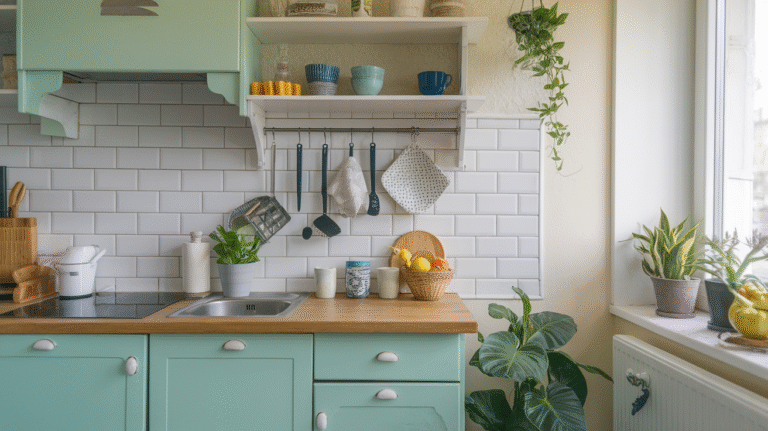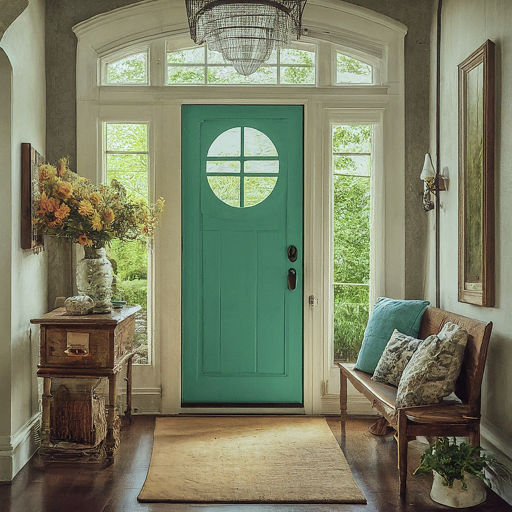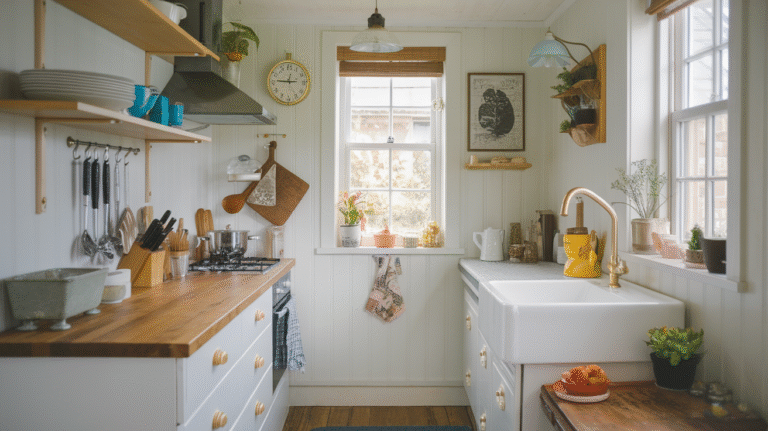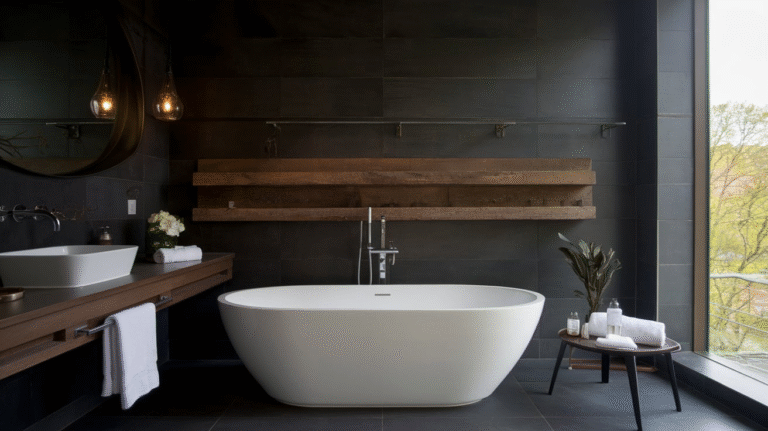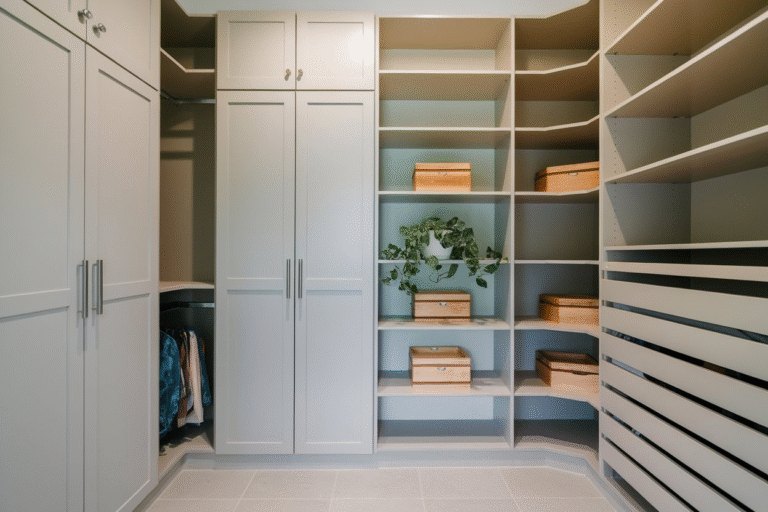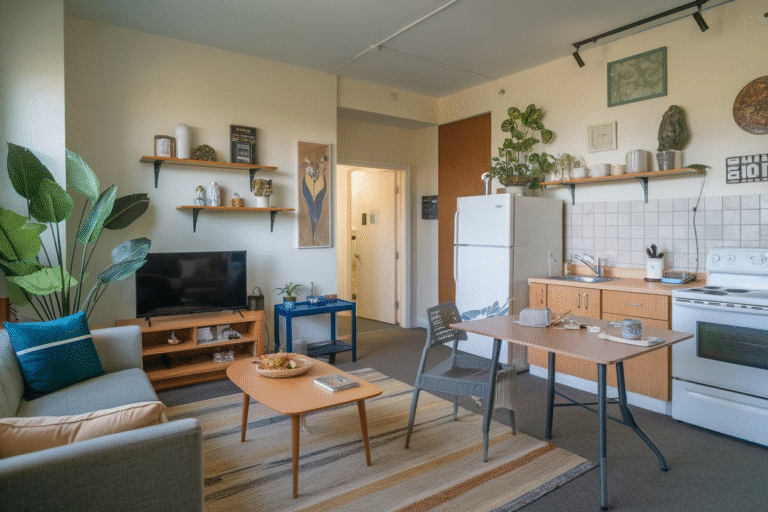24 Home Office Setup Ideas
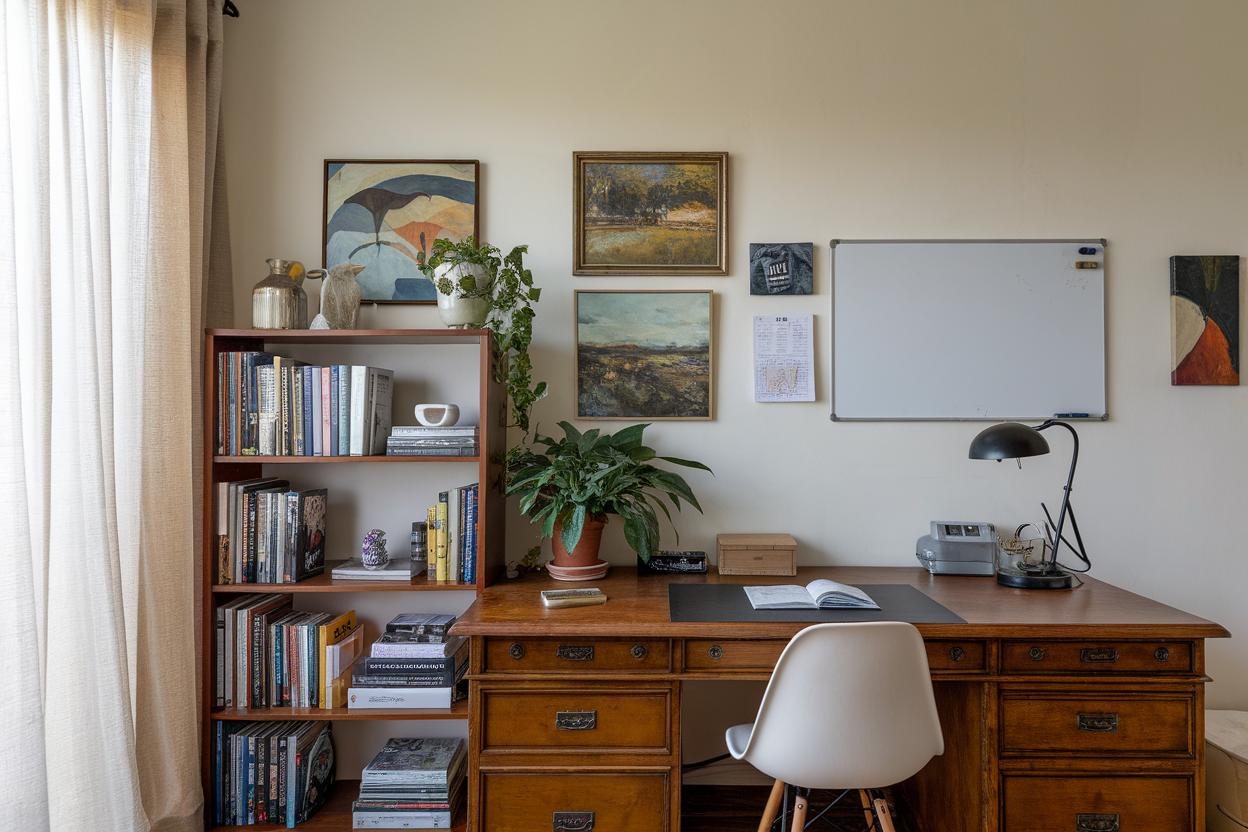
Setting up a home office isn’t just about slapping a desk in the corner and calling it a day.
It’s about creating an environment that sparks your creativity, keeps distractions at bay, and makes you want to actually sit down and get things done.
If you’ve been staring at your bland, uninspiring workspace, stuck in a rut, or just setting up your first home office, you’ve landed in the right place.
Why Your Home Office Setup Matters More Than You Think
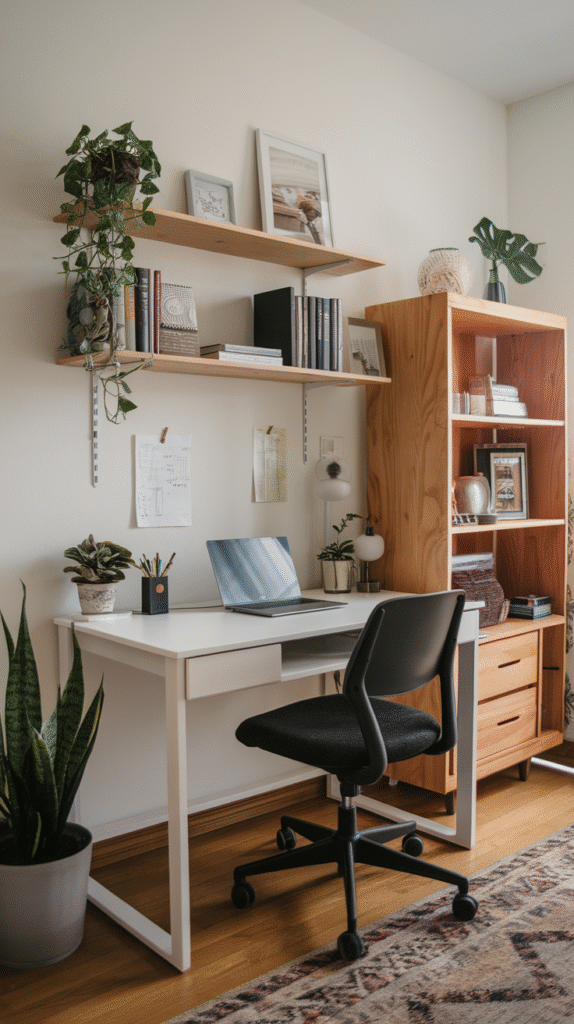
Before diving into ideas, let’s talk about why this matters. A well-thought-out setup can influence your mood, focus, and even your health.
Trust me, I’ve been there—working from a cramped, cluttered corner felt like trying to swim in molasses.
But once I revamped my space, productivity didn’t just improve; it soared. Your workspace is your command center—make it one that energizes, not drains.
1. Choose the Right Spot for Your Home Office
Location is everything. If possible, pick a quiet corner or spare room with good natural light. Avoid high-traffic areas where household noise or distractions can invade your bubble. If space is tight, think vertically—use wall-mounted shelves to free up desk area.
Personally, having my desk near a window with a view of greenery changed the whole vibe for me—it’s like my secret recharge station every time I glance outside.
2. Invest in a Quality Ergonomic Chair
Your chair isn’t just a seat; it’s a throne for your productivity kingdom. A comfortable, ergonomic chair supports your back, encourages good posture, and prevents that sneaky afternoon slump. It’s tempting to skimp here, but believe me, your back will thank you.
Look for adjustable height, lumbar support, and breathable material. Bonus points if it swivels and rolls smoothly to keep your movements fluid.
3. Pick a Desk That Matches Your Workflow
Are you a minimalist who thrives with just a laptop and a notebook? Or do you juggle multiple monitors, papers, and gadgets? Your desk should reflect how you work.
A spacious desk with drawers and compartments helps keep clutter out of sight. For tight spaces, a wall-mounted fold-down desk can be a lifesaver. I once used a compact corner desk and found the angled setup maximized my reach and minimized distractions.
4. Harness the Power of Natural Lighting
Natural light is the closest thing to a productivity booster you’ll find without popping an energy drink. It elevates mood and reduces eye strain.
Position your desk near a window if you can. When that’s not possible, invest in full-spectrum daylight bulbs to simulate natural light, especially for those late-night work sessions or gloomy days.
5. Upgrade Your Lighting with Task and Ambient Lights
Overhead lights can be harsh or insufficient. Complement them with task lighting, like adjustable desk lamps, and ambient lighting, such as soft LED strips or floor lamps, to create a balanced environment.
When I added a warm desk lamp with adjustable brightness, those late-evening calls became far less tiring.
6. Embrace Cable Management Like a Pro
Cables can turn a clean workspace into a spaghetti junction fast. Use cable clips, sleeves, and under-desk trays to tame the mess.
You’d be amazed how a few velcro straps and cable organizers can bring calm to your setup. Once, after decluttering cables, I felt like I’d cleared mental clutter too.
7. Personalize Your Space to Spark Joy and Focus
A bare, sterile office kills creativity. Add personal touches like a framed photo, a small plant, or inspiring artwork. These subtle reminders of what motivates you can boost morale.
However, keep personal items limited and intentional to avoid distraction. I keep a small succulent and a favorite motivational quote on my desk—it’s my little ritual that sets the tone for the day.
8. Add Greenery for Freshness and Calm
Plants aren’t just decoration—they improve air quality and reduce stress. Easy-care options like snake plants, pothos, or succulents fit well in office setups.
I swear by my spider plant; watching it thrive makes me feel connected to life beyond the screen.
9. Optimize for Technology: Multiple Monitors and Accessories
If your work involves multiple applications or heavy multitasking, consider setting up dual monitors or an ultrawide screen. This setup can dramatically increase productivity.
Don’t forget ergonomic accessories like a wireless keyboard and mouse, and a laptop stand to raise your screen to eye level, preventing neck strain.
10. Create Dedicated Zones for Work and Breaks
If space allows, separate your work desk from your break area. A comfy chair or a small couch can be your getaway spot during breaks, keeping your work zone strictly for work.
This mental separation helps keep focus sharp. When I worked from the kitchen table with no distinction, it felt like I was “on” 24/7, leading to burnout.
11. Soundproof Your Office for Peace and Concentration
Noise is productivity’s arch-nemesis. Use thick curtains, rugs, or even foam panels to dampen ambient sounds.
If that’s not enough, invest in noise-canceling headphones or a white noise machine to drown out distractions. I used to work with constant street noise—adding a rug and curtains made a huge difference.
12. Incorporate Inspirational and Functional Wall Decor
Walls don’t have to be blank and boring. Use whiteboards, corkboards, or pegboards to keep notes, to-do lists, and reminders visible.
Incorporate motivational posters or art that speaks to your goals. A friend uses a corkboard filled with photos and notes to keep track of progress—she calls it her “mission control.”
13. Keep Essential Supplies Within Arm’s Reach
Have your everyday tools — pens, notebooks, chargers — in easy-to-reach containers or drawers. The less you have to get up, the better for flow.
I keep a simple desktop organizer with compartments for my essentials, which makes me feel like a productivity ninja.
14. Utilize Vertical Space to Maximize Storage
When floor space is limited, think upward. Install floating shelves or wall-mounted cabinets to store books, files, or decor.
Vertical storage frees up desk space and keeps your office feeling open rather than cluttered. I installed shelves above my desk and suddenly had room for a neat filing system.
15. Create a Color Scheme that Energizes or Calms You
Colors impact mood and productivity. Blues and greens tend to be calming, while yellows and oranges can energize.
Choose a palette that suits your personality and work style, and use it consistently across your office elements. My office is painted a soft sage green — it’s like a gentle hug during stressful days.
16. Invest in Adjustable Desk Options for Movement
Sitting all day is the modern villain. Adjustable desks that allow you to switch between sitting and standing are game changers.
Even if a full adjustable desk isn’t feasible, a desk converter can lift your workspace for standing breaks. Moving around throughout the day keeps energy levels higher.
17. Set Up Smart Home Office Tech
From smart lighting that adjusts based on time of day to voice assistants that manage your calendar, smart technology can streamline your workflow.
I use a smart plug to automate my desk lamp and a digital assistant to remind me of meetings — small upgrades that make a big difference.
18. Manage Temperature and Ventilation for Comfort
No one can focus when they’re freezing or overheating. Make sure your workspace has good air circulation.
A small fan, heater, or air purifier can keep your environment comfortable and your brain sharp. I keep a desk fan handy during summer; it’s surprisingly essential.
19. Limit Distractions with Visual Barriers
If your home office is in a shared or open space, use room dividers, curtains, or bookshelves to create a visual barrier.
This helps your brain switch into work mode and signals to others that you’re “off-limits.” I remember putting up a folding screen during video calls—it instantly upped my professional vibe.
20. Organize Digital and Physical Files Efficiently
Digital clutter is as distracting as physical mess. Use cloud storage with organized folders and regularly declutter your desktop.
For paper, invest in filing cabinets or labeled binders. Keeping both realms tidy means less time hunting and more time doing.
21. Incorporate Comfortable Flooring Options
If you’re on your feet with a standing desk or just want extra comfort, a cushioned mat or rug underfoot helps.
Soft textures reduce fatigue and add warmth to the room. I added a thick wool rug under my desk—it’s a small change with a huge cozy factor.
22. Use Mirrors to Amplify Light and Space
A well-placed mirror reflects natural light and makes a small office feel larger and more open.
Try positioning a mirror opposite a window. It’s like tricking your space into doubling its brightness and size.
23. Establish a Daily Ritual to Enter Work Mode
Your setup is just the stage—the real magic comes from routines. Use a pre-work ritual like brewing coffee, stretching, or tidying your desk to signal your brain it’s time to focus.
I do a quick 5-minute desk tidy and light a candle before starting—it’s my “switch on” button.
24. Regularly Refresh and Reassess Your Setup
Finally, your home office isn’t static. As your work evolves, so should your space.
Schedule a quarterly review to tweak your setup, swap out decor, or reorganize. Keeping your environment fresh keeps motivation high.
Conclusion
Building a home office setup that suits your style, needs, and work habits can feel like a big task, but breaking it down into these 24 ideas makes it manageable.
Whether it’s investing in an ergonomic chair, adding plants for calm, or managing your cables like a ninja, each piece contributes to a workspace that doesn’t just look good but feels good.
Remember, the best office is the one where you feel empowered to create, focus, and thrive. So pick the ideas that speak to you, try them out, and make your home office truly yours. Your future self, deep in flow and crushing that to-do list, will thank you.

